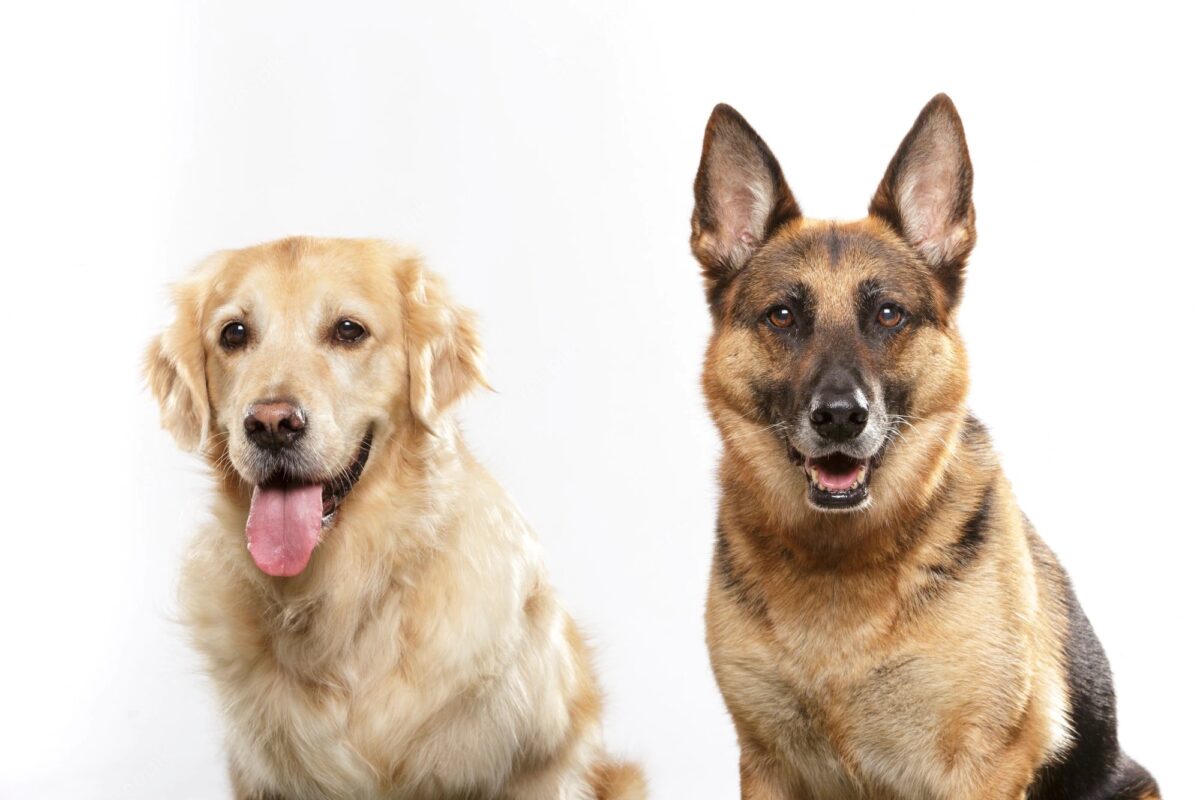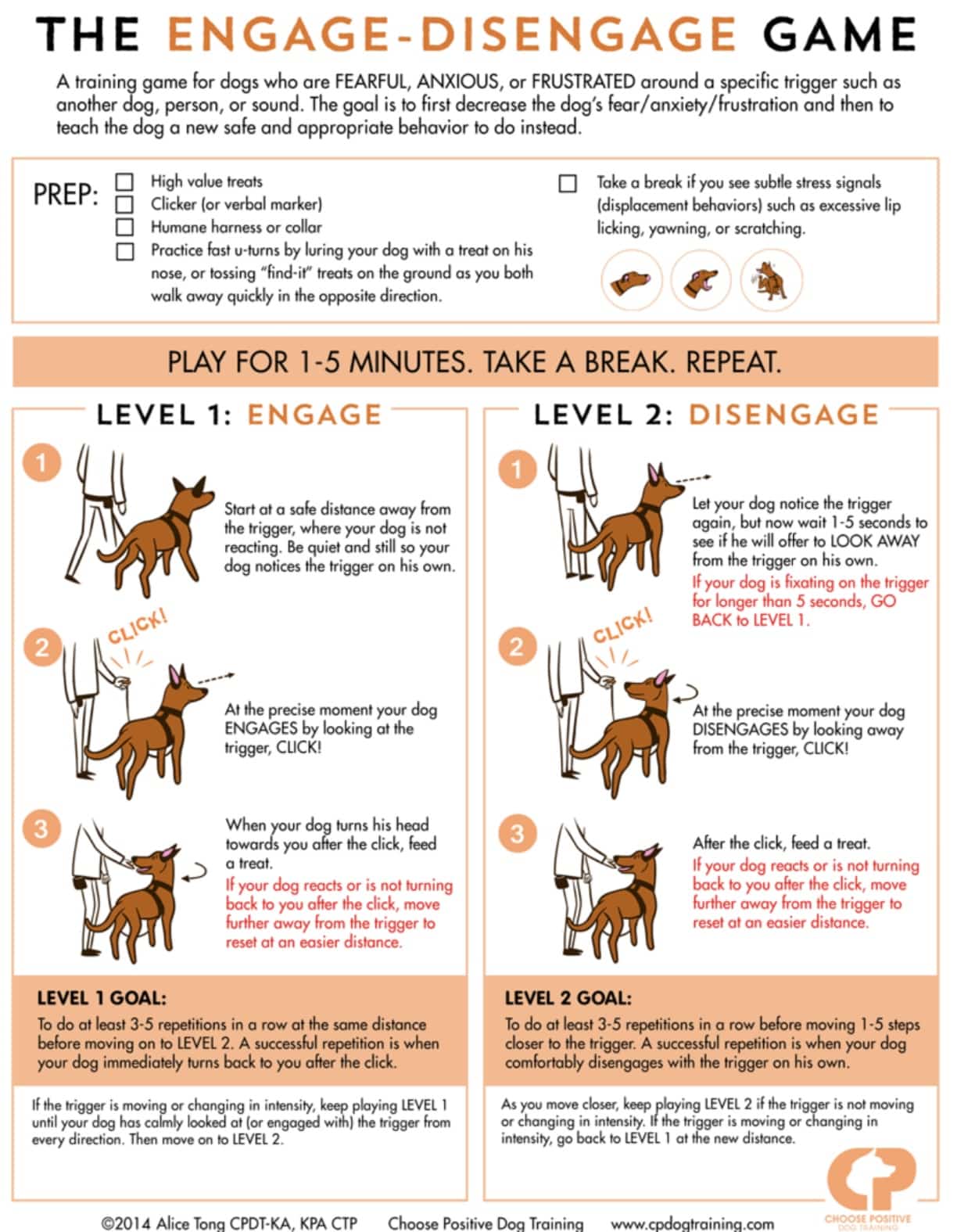behavior modification, dog training, engagement
How and why to teach a dog “engage, disengage”
How and why to teach a dog “engage, disengage”
By Will Bangura, M.S., CBCC-KA, CPDT-KA (Dog Behaviorist,) Certified Dog Behavior Consultant
How and why to teach a dog “engage, disengage” is a training concept that professional dog trainers and dog behaviorists widely use to help dogs focus on their handlers and improve their behavior. It is often used in conjunction with other training techniques to address specific behavior problems such as fear, aggression, and distraction.
“Engage” and “disengage” are terms used in dog training to indicate when a dog should focus on their handler and when it should focus on its environment. Engage means to pay attention to the handler, while disengage means to release attention and focus on the environment.
Dog trainers teach “engage, disengage” to increase a dog’s ability to focus on its handler in various environments and distractions. This can be useful in many situations, such as obedience training, agility training, and therapy dog work.
The following steps can be used to teach “engage, disengage” to a dog.
- Start with your dog on a leash in a quiet area with minimal distractions.
- Say “engage” and offer a treat or toy as a reward for your dog’s attention.
- Repeat this step several times, gradually increasing the duration of time your dog is expected to pay attention before receiving a reward.
- Once your dog is reliably paying attention to you, add a new command such as “look” or “watch me” to indicate when you want your dog to focus on you.
- Introduce distractions such as other people or dogs, and use the “engage” command to redirect your dog’s attention back to you.
- Once your dog can reliably focus on you in various environments, add the “disengage” command to indicate when it can release its focus and pay attention to the environment.
- Reward your dog for disengaging and paying attention to its environment.
Here are three examples of how “engage, disengage” can be used.
- Obedience training: In obedience training, the “engage” command can be used to get a dog’s attention before giving a command such as “sit” or “stay.” The “disengage” command can be used to release the dog from the command and allow them to move around or play.
- Agility training: In agility training, the “engage” command can be used to get the dog’s attention before starting an obstacle course. The “disengage” command can be used to release the dog from the obstacle course and allow them to take a break.
- Therapy dog work: In therapy dog work, the “engage” command can be used to get the dog’s attention before interacting with a patient. The “disengage” command can be used to release the dog from the interaction and allow them to rest.
It is important to note that training a dog “engage, disengage” is not a one-time training; it needs to be consistent and practiced in a different environment and with different levels of distractions.
“Engage, disengage” can be very helpful in addressing behavior problems in dogs. For example, if a dog is fearful or aggressive, teaching them to “engage” and pay attention to their handler can help them feel more secure and calm. This is because when a dog is focused on their handler, they are less likely to be focused on whatever is causing them fear or aggression.
Here’s how “engage, disengage” can be helpful for a fearful dog.
- Start by teaching the “engage” command in a quiet, low-stress environment.
- Gradually introduce the dog to what they are afraid of, using the “engage” command to redirect their attention back to you.
- Reward the dog for paying attention to you in the presence of their fear.
- As the dog becomes more comfortable, gradually increase the duration of time they are expected to pay attention before receiving a reward.
- Once the dog is comfortable with the “engage” command, add the “disengage” command to indicate when they can release their focus and pay attention to their environment.
Here’s how “engage, disengage” can be helpful for an aggressive dog.
- Start by teaching the “engage” command in a quiet, low-stress environment.
- Gradually expose the dog to what triggers their aggression, using the “engage” command to redirect their attention back to you.
- Reward the dog for paying attention to you in the presence of the trigger.
- Gradually increase the duration of time the dog is expected to pay attention before receiving a reward, and gradually decrease the distance between the dog and the trigger.
- Once the dog is comfortable with the “engage” command, add the “disengage” command to indicate when the dog can release their focus and pay attention to their environment, but always be aware of the dog’s body language and limit the exposure when you observe any signs of aggressive behavior.
It is important to note that “engage, disengage” is not a solution for all behavior problems, and it is always recommended to work with a professional dog trainer or behaviorist, who can help you address the root cause of the problem and give you a customized plan to help the dog.
Here’s how to clicker train to engage and disengage with a dog.
Clicker training is a positive reinforcement-based training method that uses a small mechanical device called a clicker to mark the exact moment a dog performs a desired behavior. Here’s a step-by-step guide on how to clicker train “engage, disengage” to a dog:
- Introduce the clicker Start by introducing your dog to the clicker. Click the clicker and immediately give your dog a treat. Repeat this several times until your dog associates the clicker’s sound with a reward.
- Teach the “engage” command. Choose a word or phrase such as “look” or “watch me” to use as the “engage” command. Show the dog a treat and hold it in front of your face. When the dog looks at you, click and give them the treat. Repeat this several times, gradually decreasing the frequency of treats.
- Add distance and duration. Once your dog reliably looks at you when you give the “engage” command, start adding distance and duration. Start by taking a step back and giving the command. As soon as your dog looks at you, click and treat. Gradually increase the distance and the amount of time you wait before clicking and treating.
- Teach the “disengage” command. Choose a word or phrase such as “OK” or “free” to use as the “disengage” command. After giving the “engage” command, wait for a few seconds, then give the “disengage” command and release the dog from the “engage” command.
- Practice in different environments. Practices the “engage, disengage” commands in different environments with different distractions. Remember always to click and treat when the dog performs the desired behavior.
- Fade out the clicker. As the dog becomes more reliable at responding to the “engage, disengage” commands, gradually fade out the use of the clicker. Give the command and reward with a treat, but not every time. Eventually, you should be able to give the command, and your dog will respond without needing a clicker or treat.
It’s important to remember that clicker training requires patience and consistency and that dogs learn at their own pace. If you’re struggling to teach your dog to “engage, disengage” using a clicker, it’s best to consult a professional dog trainer for help.
Some dog training books that cover the concept of “engage, disengage” include:
- “The Power of Training Dogs with Food” by Karen Pryor
- “Control Unleashed: Creating a Focused and Confident Dog” by Leslie McDevitt
- “The Other End of the Leash” by Patricia McConnell
- “Feeling Outnumbered? How to Manage and Enjoy Your Multi-Dog Household” by Karen London & Patricia McConnell
- “The Genius of Dogs: How Dogs Are Smarter Than You Think” by Brian Hare and Vanessa Woods.
Some dog training books that cover the concept of clicker training and positive reinforcement training include:
- “Don’t Shoot the Dog!: The New Art of Teaching and Training” by Karen Pryor
- “The Power of Positive Dog Training” by Pat Miller
- “Clicker Training for Dogs” by Karen Pryor
- “The Perfect Puppy: How to Raise a Well-behaved Dog” by Gwen Bailey



